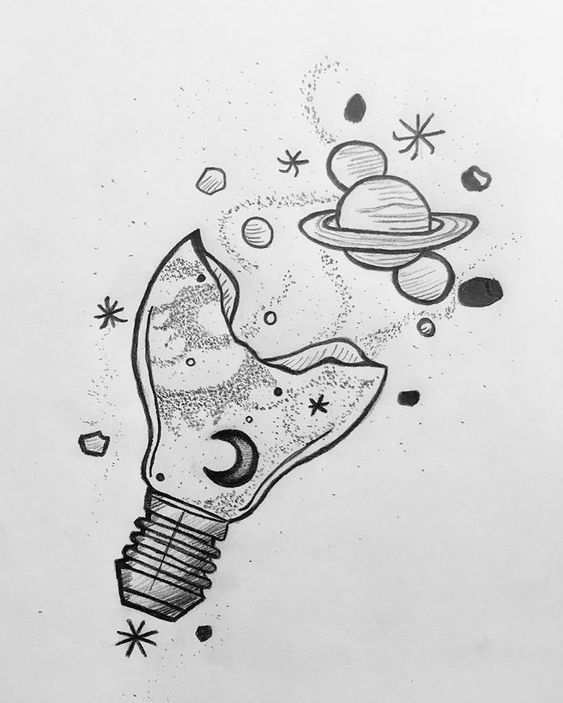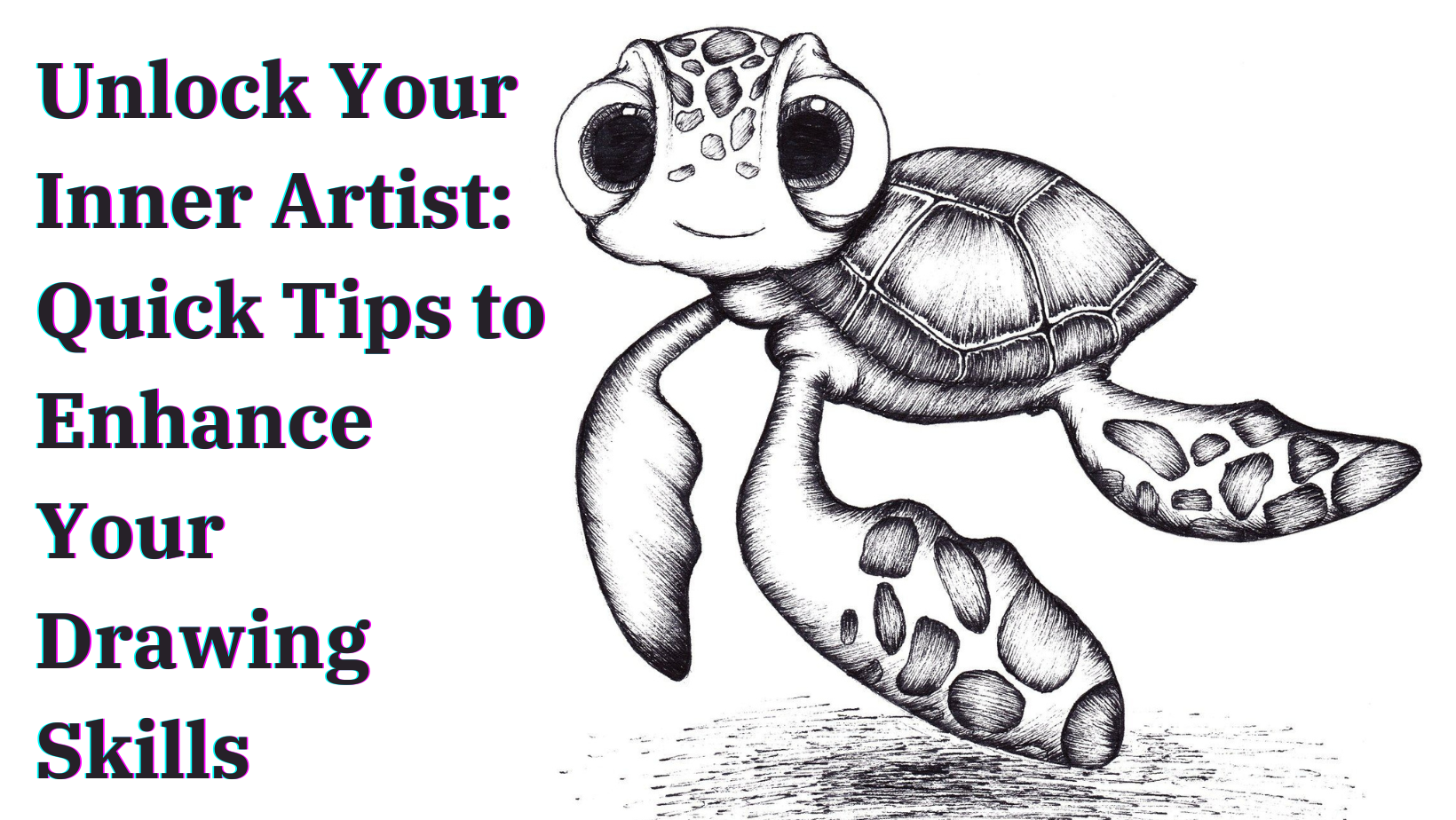Enhancing your drawing skills involves the act of creating marks on a surface using various mark-making tools. The inclusivity of this definition implies that drawing is a skill accessible to everyone; if you can write your name, you can draw. However, as with any skill, there are varying levels of proficiency. Developing expertise in drawing requires a combination of factors such as motivation, guidance, consistent practice, dedicated time, and more practice. To expedite your progress in drawing, I’ve compiled a set of quick tips that can yield immediate improvements in your artistic abilities. It’s important to note that these tips don’t serve as a universal formula for drawing success but are insights I’ve gathered over time, proven to be beneficial in my own artistic journey.
- Desire for Improvement: Cultivate a strong desire to enhance your drawing skills. This inner motivation will fuel your commitment to practice regularly and push yourself beyond your comfort zone.
- Seek Instruction: Embrace learning through various sources, including online tutorials, books, workshops, and feedback from experienced artists. A combination of formal and informal education can significantly impact your growth.
- Consistent Practice: Dedicate regular time to practice drawing. Consistency is key, as incremental progress adds up over time. Set aside specific periods in your schedule devoted to honing your craft.
- Study Basic Shapes and Forms: Understand the fundamental building blocks of objects by studying basic shapes and forms. This foundation will help you break down complex subjects into manageable components.
- Observational Skills: Develop keen observational skills by closely studying the world around you. Pay attention to details, proportions, and relationships between elements. This heightened awareness will translate into more accurate and realistic drawings.
- Experiment with Different Tools: Explore a variety of mark-making tools, such as pencils, pens, charcoal, or digital tablets. Each tool offers unique possibilities, allowing you to discover what works best for your style and preferences.
- Learn from Mistakes: Embrace mistakes as part of the learning process. Analyze errors rather than being discouraged by them. Mistakes provide valuable insights that contribute to your artistic growth.
- Explore Different Styles: Experiment with various drawing styles to find your own artistic voice. Exposure to different approaches broadens your artistic vocabulary and allows you to incorporate diverse elements into your work.
- Patience and Perseverance: Acknowledge that improvement takes time. Be patient with yourself and maintain a positive mindset. Perseverance in the face of challenges is crucial for long-term success.
- Connect with the Art Community: Engage with fellow artists, both online and offline. Join art communities, share your work, and seek constructive feedback. Networking with other artists provides valuable insights and a sense of camaraderie.

1. Drawing is a Learnable Skill
Drawing is not an innate, mystical ability reserved for a select few; rather, it is a skill that can be taught and, most importantly, acquired through dedicated learning. Whether your aspiration is to begin drawing, refine your skills, or pursue a professional career in art, it is essential to recognize that drawing proficiency is attainable for anyone. Discard the self-limiting belief of saying, “I can’t draw,” as it undermines the fact that drawing is a teachable skill.
2. Observation: The Essence of Drawing
Drawing is fundamentally an act of seeing. Similar to how taking a photo requires aiming the camera, drawing necessitates a focused observation of the subject. Disappointment often arises when drawings lack representational accuracy due to insufficient observation. Allocate at least 50% of your drawing time to closely studying the subject. Whether drawing from life or a reference photo, immerse yourself in observing and understanding the subject’s intricacies before translating them onto paper.
3. Utilize Resources Effectively
In conjunction with keen observation, leverage available resources to enhance your drawings. If unable to draw subjects in person, gather or capture reference photos. While some may debate the authenticity of using photos, recognize that not every subject can be drawn from life. Employing photos strategically can provide valuable details and aid in accurate representation.
4. Simplify with Basic Shapes
Simplification is a key strategy in drawing. Break down complex subjects by identifying and sketching their basic shapes. This approach not only facilitates accurate representation but also enhances drawing speed. Begin by drawing these fundamental shapes, then refine your sketch by adding contours, creating a foundation for a more detailed and accurate portrayal.
5. Master the Use of Value
Understanding value, the interplay of light and darkness in color, is crucial in drawing. Create a value scale to guide your work and ensure a full range of values in your drawing. By manipulating values effectively, you can convey the source of light and add depth to your artwork, emphasizing form and creating a visually engaging piece.

6. Explore Line Quality
Consider the thickness and thinness of lines in your drawings, known as line quality. Varying line thickness adds interest and diversity to your artwork. Experiment with different line qualities to convey texture, depth, and emotion, ensuring your drawing is visually dynamic.
7. Maintain Consistency in Style
Harmony in your drawings is achieved by starting and finishing with the same stylistic approach. Whether your initial strokes are loose and gestural or tight and precise, consistency ensures that your artwork appears unified, contributing to a cohesive and visually pleasing result.
8. Understand Your Medium
Familiarize yourself with the characteristics and limitations of the drawing medium you choose. While experimentation is encouraged, a thorough understanding of your chosen medium allows you to make intentional and effective choices in your artwork.
9. Embrace Fluidity in Drawing
Avoid stiffness in your drawings by introducing a sense of fluidity. Experiment with different pencil grips and arm movements to achieve varied marks and lines. Drawing should not be rigid; rather, it benefits from a free-flowing, exploratory approach that allows for discovery and spontaneity.
10. Practice Diligently
Consistent and dedicated practice is the linchpin of improvement in drawing. Maintain a sketchbook, draw daily, and challenge yourself to observe and imagine drawings even when you can’t physically put pencil to paper. Mastery in drawing is a cumulative result of continuous practice, observation, and a commitment to honing your craft.




